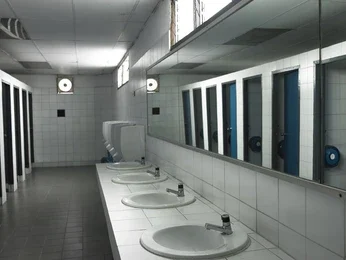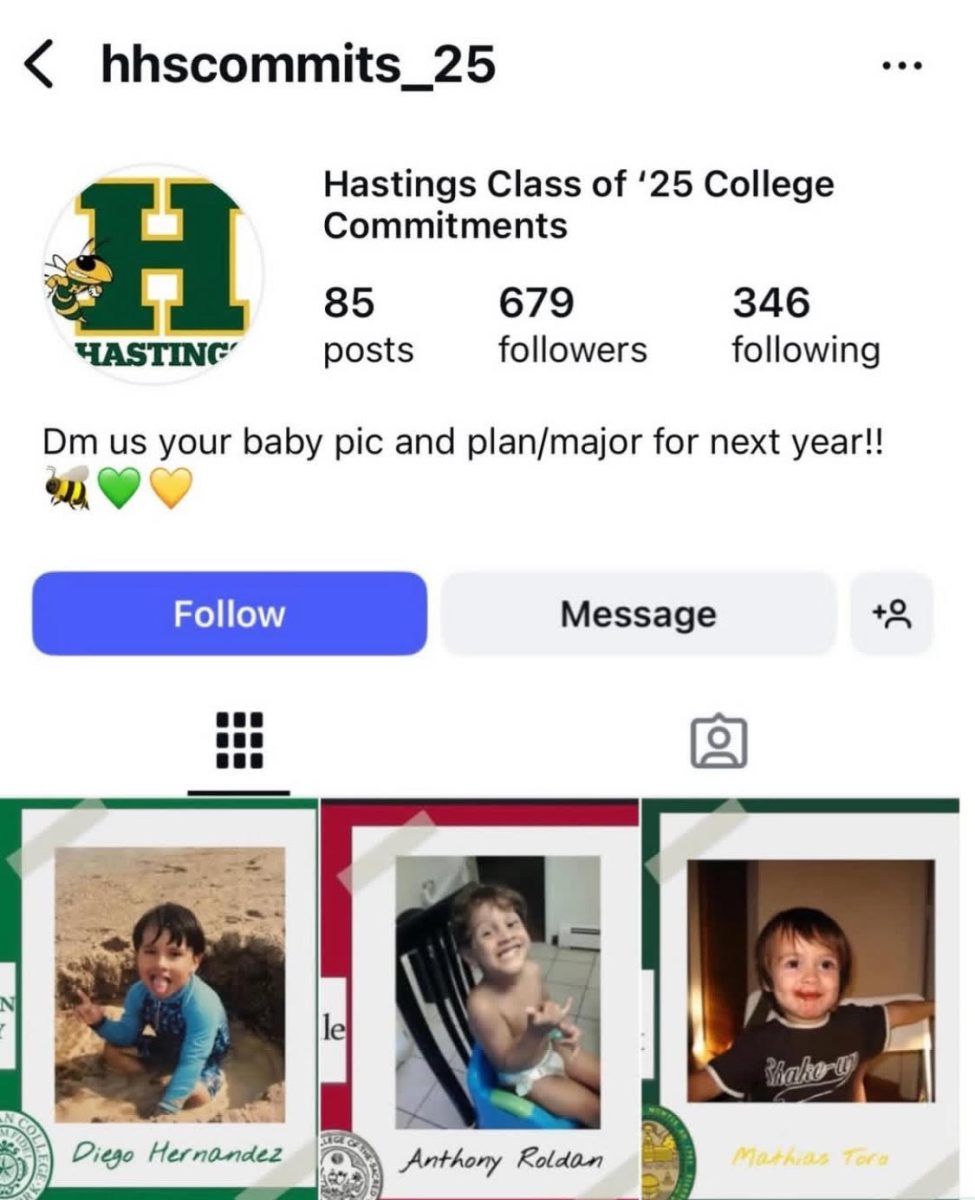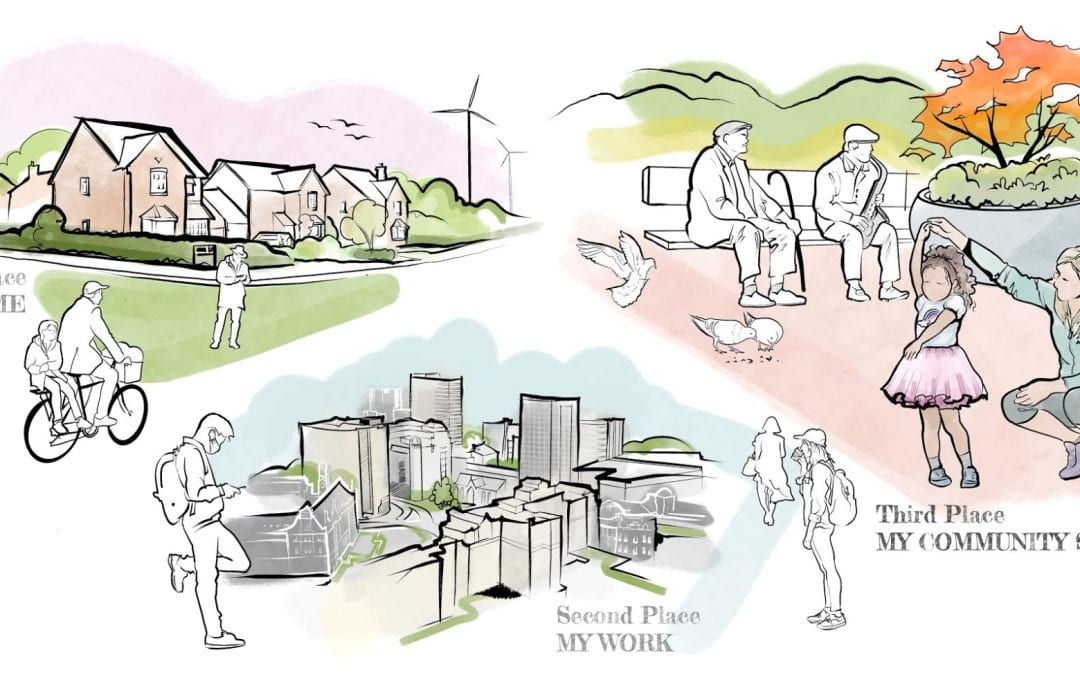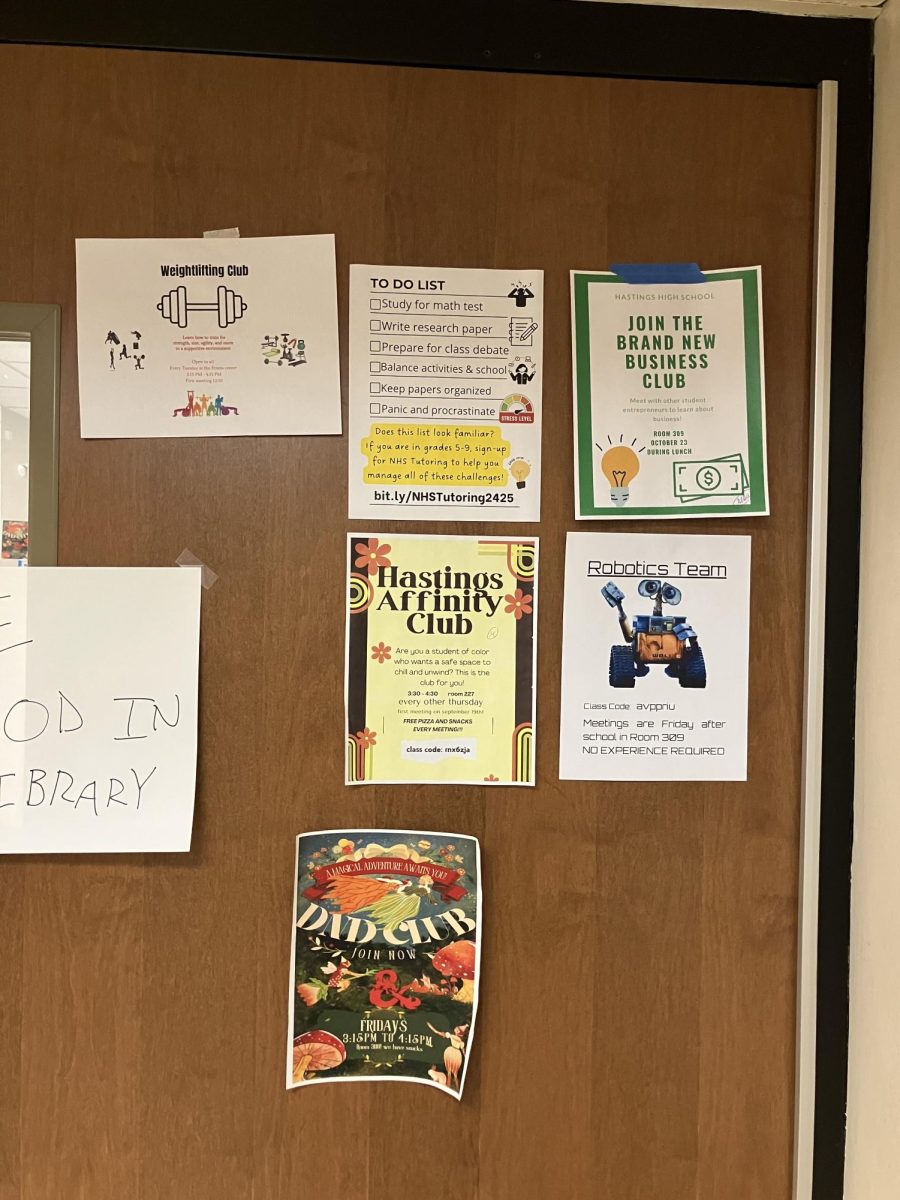Clubs are a pinnacle of high school life. They provide a space for students with common interests to congregate and explore their interests while building their passions with others. This year, Hastings High School students have founded 16 new clubs—a notable increase to the list of now 46 officially recognized clubs. With the hallways decorated with colorful flyers advertising clubs to the student body, this surge is apparent.
Steven Lopez, the Student Union advisor who manages clubs at HHS, explained that the process of starting a club requires only a couple steps. His involvement consists of sending the students a form or a template which they use to describe the details of their club; “they just have to write the club name, objective goals… and meeting times and dates.”
One of the major steps, which Lopez explained, is that “you have to have a teacher who’s present to monitor and make sure you’re actually doing [the planned activities].” Once students complete these steps, they can begin promoting their club. However, approval is required if they want to put up flyers.
Although the process of getting a club approved seems simple, Genesis Chacha, one of the founders of the newly established Clay Club explained how “there were lots of things that came up as [the club] was starting up, such as finances and storage or materials, especially with a hands-on club like clay club.”
Through an increase in clubs, the high school has acquired many new spaces where students who share unique passions can connect. Genesis Chacha and Rosie Dunn explained how they found the inspiration for their clay club in their ceramics class where they wished they could “use the clay for whatever [they wanted],” and make a space where people who haven’t taken ceramics or heavily enjoyed the class can still “express themselves freely with clay.”
This drove the Clay Club creators to establish their club, and they hope that it will “bring creativity to the Hastings High School community,” and bring people together who have a shared passion for ceramics while “not feeling overwhelmed with having to complete a certain project with guidelines.”
Ben Levan, co-founder of the new Philosophy Club, a club that has gained popularity for their bi-weekly meetings full of deep philosophical discussions, explains how they “had the idea during the summer, and wanted to make it reality.” To bring attention to their club, they have “uniquely designed posters up for every meeting.”
Teddy Carr, who founded Philosophy Club alongside Levan, asserts that the club aims to create “a place to learn and have really interesting debates about philosophy” at the high school through their club.
For some students, however, the motive to start a club may stretch beyond a simple goal. “Every year I have a slew of juniors wanting to come in and start a club,” Lopez explained. “I think that may look good for college.”
No matter the reason behind their establishment, a large number of clubs means variety in how clubs are structured, which is different for each group. Some are more “mission driven” and meet outside of school, according to Lopez. “Our Neighbors [does] community service… [and] Academic Challenge has competitions.”
On the other hand, “there are some clubs that just… meet here that maybe are just a year old.”
A plethora of clubs also leaves room for potential overlapping in subject matter. “I know there’s a Feminism Club,” said Lopez, “…This year we also have a Women’s Health Club.”
Part of Lopez’s job is to keep a running record of clubs, so speaking to advisors and checking in if clubs are still active is something he does in September.
Although the school has seen an influx of new clubs over the past year, according to Lopez, “clubs come and go.” He used GSA (Gender-Sexuality Alliance) as an example, mentioning that participation has gotten a bit smaller since it began four years ago.
Lopez credited this partially due to scheduling issues; “We have faculty meetings on Wednesdays… Fridays are not a popular time because who wants to stay on a Friday? So really, most clubs happen on Monday, Tuesday, and Thursday.”
This forces students to choose between the many clubs offered at HHS, as well as balancing other activities, such as sports, theater, and music. However, a student survey revealed that nearly 85% of students attend the meetings of the clubs they are in either regularly, or semi-regularly. This could be attributed to students’ positive attitudes towards engaging in topics that interest them.
An anonymous student commented that “[clubs] are a great way to enrich learning, learn things you would not have otherwise, and to connect with people who enjoy the same things.”
This message was common among students, with many sharing that clubs help them find a community with others who share their interests. “Many of my friends don’t share the same interests as me, and so clubs provide a space where I can talk to people who I normally wouldn’t engage with, that share a mutual interest with me,” explained another student.
On the other hand, one respondent shared that a downside of having many clubs is having to pick and choose: “People [can’t] go to all the clubs they want to because there are other clubs on the same day.”
There should be more clubs, according to students, and there aren’t many ways for people to find out about smaller clubs.
As clubs continue to grow and change at HHS, student input provides different perspectives into how clubs should be run and organized in the future.



















